9 Best Pomeranian Dog Foods for Adult and Puppy Pomeranians + Exclusive Nutrition and Diet Info
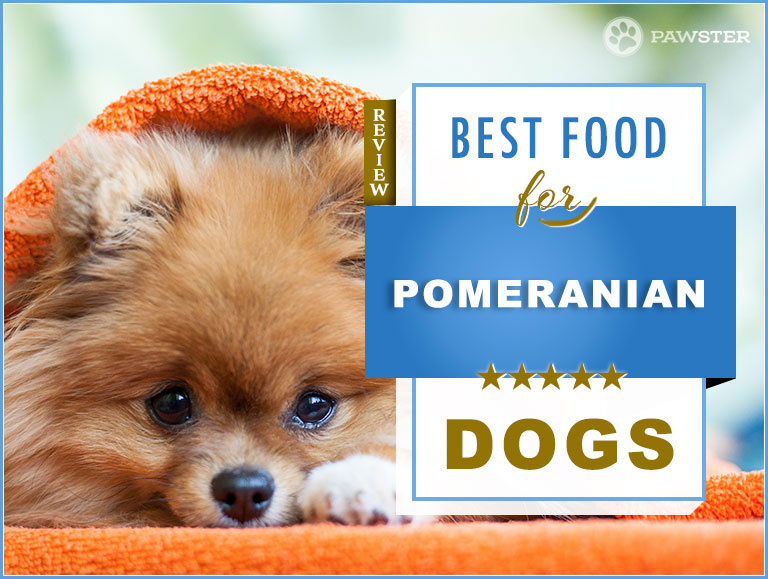
Contents of Article
- What is the Best Dog Food for a Pomeranian?
- Our In-Depth Review of the Best Pomeranian Dog Foods
- Best Overall Adult Pomeranian Dog Foods
- UnKibble by Spot and Tango Chicken & Brown Rice Recipe
- American Journey Chicken & Brown Rice Recipe Dry
- Ollie Healthy Turkey Feast Fresh Dog Food
- Taste of the Wild Appalachian Valley Small Breed Grain-Free Dry
- Merrick Lil’ Plates Grain Free Real Chicken & Sweet Potato Recipe
- Fromm Small Breed Adult Gold
- Wellness CORE Grain Free Small Breed Formula
- Best Puppy Food for Pomeranians
- Our Guide to Feeding an Adult and Puppy Pomeranian
- General Nutritional Recommendations
- Special Dietary and Nutritional Considerations
Possibly one of the cutest of all dog breeds (their owners certainly think so), Pomeranians were once used as sled dogs in the northern sections of Germany and Poland. At that time these spitz-type dogs were much larger. By the 18th century the British royal family had become fond of the dogs. Over the next 150 years they worked to produce smaller Pomeranians. By the time Queen Victoria died in 1901, Pomeranians were 50 percent smaller than their original size. Today the Pomeranian is consistently one of the most popular breeds in the U.S.
Poms are small, cocky, energetic dogs. Because of their small size they don’t need much additional exercise. The breed is known for being friendly, playful, and outgoing. They also enjoy being a lapdog. They like to be the center of attention and they can become dominant in the home if you let them, so it’s important that you train your Pomeranian and provide good socialization from a young age. Barking can be a problem unless you train your dog. Pomeranians today weigh between 3 and 7 pounds and they are only about 6-7 inches tall at the shoulder. They have a thick double coat that comes in a wide range of colors and patterns.
Choosing a dog food for your Pomeranian can be an overwhelming task. You want to take into account everything about your dog from their breed, to their size, to their energy level, and even if they have any allergies or food sensitivities. We have narrowed down the search for you by choosing what we think are the best 8 dog foods for Pomeranians. So read on to find out more!
What is the Best Dog Food for a Pomeranian?
- UnKibble Duck and Salmon by Spot and Tango
- American Journey Chicken & Brown Rice Recipe Dry
- Taste of the Wild Appalachian Valley Small Breed Grain-Free Dry
- Merrick Lil’ Plates Grain Free Real Chicken & Sweet Potato Recipe
- Fromm Small Breed Adult Gold
- Wellness CORE Grain Free Small Breed Formula
- Wellness Complete Health Small Breed Puppy
- Canidae Grain Free PURE Foundations for Puppies with Chicken
- Wellness CORE Grain Free Small Breed Formula
Our In-Depth Review of the Best Pomeranian Dog Foods
Most good quality dog foods today are formulated to be suitable for all dogs. You can look for foods that are AAFCO-approved for “All life stages.” These foods would be a good place to start when looking for foods for your Pomeranian. You can feed them to puppies, adults, and senior dogs. Or you can choose a food that is specially-formulated for small breeds.
Here are some good brands that we like for adult and puppy Pomeranian:
Best Overall Adult Pomeranian Dog Foods
UnKibble by Spot and Tango Chicken & Brown Rice Recipe
Healthy Ingredients : Duck, Salmon, Flax, Tapioca, Sweet Potatoes, Carrots
Key Features :
-
- Special scoop in just the right size
- Human grade ingredients
- No artificial flavors or preservatives
- Ships direct to your door
UnKibble Duck and Salmon by Spot and Tango
UnKibble Duck and Salmon by Spot and Tango is a lot like the fresh food options that are becoming more and more popular, but it’s dry food. It is made from human-grade ingredients and delivered right to your door with a customized scoop in just right size.
UnKibble by Spot and Tango is a dry dog food option that is made with 100% whole ingredients and delivered right to your doorstep. It is a dry dog food, but it is also like a fresh food. It is dried slowly at a low temperature to help preserve the nutritional integrity. UnKibble is made with whole, human-grade ingredients and the recipes are simple and healthy. UnKibble was developed by veterinarians, so you can be sure that your pet is getting only the best nutrition at each meal. There are 3 different recipes you can pick from, each with a different protein. When you sign up for Spot and Tango, you will create a unique profile that will include a scoop for the correct portion size, just for your dog. You won’t have to guess or measure, just follow your pet’s personalized plan. If you want the benefits of human grade food, at a cheaper price point, or in dry food form, we think UnKibble might be what you’re looking for!
American Journey Chicken & Brown Rice Recipe Dry
Healthy Ingredients : Deboned Chicken, Chicken Meal, Brown Rice, Peas, Rice Bran
Key Features :
- No corn, wheat, or soy
- DHA and ARA for brain and eyes
- Antioxidants for a healthy immune system
- Nutrient-dense
American Journey Chicken & Brown Rice Recipe Dry Dog Food
American Journey Chicken & Brown Rice Recipe Dry Dog Food supports healthy muscle development and has antioxidants to support your dog’s immune system, too. It has DHA and ARA for brain development and doesn’t have any wheat, corn, or soy.
American Journey Chicken and Brown Rice is a complete and balanced recipe that is specially crafted to meet the nutritional demands of your dog. With real, deboned chicken as the first ingredient to support healthy muscle development, antioxidants added to help support a healthy immune system, omega fatty acids to help maintain skin and coat health, and a precise blend of calcium and phosphorus for healthy bones and teeth, this food is sure to keep your pet healthy and happy. American Journey dog food also contains DHA and ARA, naturally occurring fatty acids to help support brain and vision development. Plus, it’s made using nutrient-dense ingredients and there is never any wheat, corn, soy, chicken or poultry by-product meals, or artificial preservatives, colors or artificial flavors.
Ollie Healthy Turkey Feast Fresh Dog Food
Healthy Ingredients : Turkey breast, turkey liver, kale, carrots, lentils
Key Features :
- Human-Grade
- Subscription-based
- Portioned Individually for your dog
- Auto-ships direct to your door
Ollie Healthy Turkey Feast Fresh Dog Food
Ollie Healthy Turkey Feast Fresh Dog Food is a fresh, human-grade dog food option that is delivered to your doorstep based on your subscription and your dog’s needs. It is slow-cooked in small batches and can be stored in your fridge or freezer.
Ollie is a great fresh food option if you are in the market for a super premium dog food. Just like fresh food diets are gaining popularity with humans, they are becoming popular with pets. Ollie’s ingredients are all human-grade and are cooked slowly to preserve their nutritional integrity. No artificial flavors or fillers are used in any of their recipes, so you can be sure your dog is getting whole, fresh ingredients and nothing more. When you sign up for Ollie, you fill out a profile about your Pom to help them create a customized recipe and delivery schedule just for you. The food is delivered to your doorstep and stored in your fridge or freezer. Although Ollie is more expensive than other dog foods, there are a lot of added benefits that make a fresh food diet something to consider!
Taste of the Wild Appalachian Valley Small Breed Grain-Free Dry
Healthy Ingredients : Venison, Lamb Meal, Garbanzo Beans, Peas, Lentils
Key Features :
- Small kibble pieces
- Grain-free
- Not suitable for growing puppies
- Protein-rich
Taste of the Wild Appalachian Valley Small Breed Grain-Free Dry
Taste of the Wild Appalachian Valley Small Breed Grain-Free Dry is a popular dog food choice that is grain free and has small kibble pieces, making it easy for your dog to eat. It also has powerful antioxidants and omega fatty acids to support healthy skin and coat.
Specially formulated for small breeds like your Pomeranian, this Taste of the Wild recipe is not only extremely popular, but a healthy pick for your pet! It is grain-free which can be great for pets with food sensitivities, and it includes venison as the main protein to provide lasting energy for your active dog. Taste of the Wild Appalachian Valley is a natural recipe with the added vitamins and powerful antioxidants your pet needs for overall health, as well as the omega-3 and omega-6 fatty acids necessary to support healthy skin and coat. Made in the USA by a family-run company, there’s no mistaking that Taste of the Wild is one of the most popular brands we review.
Merrick Lil’ Plates Grain Free Real Chicken & Sweet Potato Recipe
Healthy Ingredients : Deboned Chicken, Chicken Meal, Turkey Meal, Sweet Potatoes, Potatoes
Key Features :
- Protein-rich
- No corn, wheat, soy
- All life stages
- Kibble or wet formula available
Merrick Lil’ Plates Grain Free Dog Food
Merrick Lil’ Plates Grain Free Real Chicken & Sweet Potato Recipe is a highly rated small-breed dog food. It is grain free and has no corn, wheat, or soy. It is chock full of protein, too.
Lots of people have told us they like Merrick’s Lil’ Plates Grain Free Recipes for their small dogs. Lil’ Plates Grain Free Real Chicken & Sweet Potatoes is one of Merrick’s highest rated foods. The first five ingredients are: deboned chicken, chicken meal, turkey meal, sweet potatoes, and potatoes. It’s an all life stage food with 430 kcal/cup, specially formulated for small breeds. It has 38 percent crude protein and 17 percent crude fat. It’s grain free with no corn, wheat, or soy, and it has no gluten or ingredients from China. And 70 percent of the ingredients come from poultry and fish. We think lots of Pomeranians will like this recipe. Merrick’s Lil’ Plates comes in kibble and wet formulas if your dog prefers a different formula
Fromm Small Breed Adult Gold
Healthy Ingredients : Duck, Chicken Meal, Chicken, Oatmeal, Pearled Barley
Key Features :
- Good source of fiber
- Digestible carbs
- Protein-rich
- Smaller kibble pieces
Fromm Small Breed Adult Gold Dog Food
Fromm Small Breed Adult Gold is protein-rich and has salmon oil for healthy skin and coat. It includes probiotics for smooth digestion, as well as dietary fiber.
Fromm Small Breed Adult Gold is another popular food for Toy/small breed dogs. It has 26 percent crude protein and 17 percent crude fat, with 416 calories per cup. The first five ingredients in the food are: duck, chicken meal, chicken, oatmeal, and pearled barley. The food also has salmon oil for good skin and coat; and probiotics for good digestion. Even dogs that are sensitive to corn and wheat can usually eat barley and oatmeal safely. These grains provide your dog with good dietary fiber. This small breed formula has small pieces of kibble that are easy for Toy dogs like Pomeranians to eat. Fromm has lots of formulas, including grain free foods, if your Pom would like something different. They also make canned foods.
Wellness CORE Grain Free Small Breed Formula
Healthy Ingredients : Deboned Turkey, Turkey Meal, Chicken Meal, Potatoes, Peas
Key Features :
- Supports healthy joints
- Protein rich
- Grain free
- Supports healthy skin and coat
Wellness CORE Grain Free Small Breed Formula
Wellness CORE Grain Free Small Breed Formula is made just for small breeds and is protein rich and grain free. It has omega fatty acids and glucosamine and chondroitin for joint support.
Wellness CORE Grain Free Small Breed Formula also gets good reviews from people who own Toy/small dogs. This formula has 396 kcal/cup. It’s grain free with 36 percent crude protein and 15 percent crude fat. And it’s naturally gluten-free with no corn, wheat, soy, artificial preservatives, flavors, or colors. The first five ingredients in this food are: deboned turkey, turkey meal, chicken meal, potatoes, and peas. This food also has a smaller kibble size so it’s easier for Toy/small breeds like Pomeranians to eat. And it has omega fatty acids from salmon oil for healthy skin and coat; probiotics and antioxidants; and glucosamine and chondroitin for joint health.
Best Puppy Food for Pomeranians
Wellness Complete Health Small Breed Puppy
Healthy Ingredients : Deboned Turkey, Chicken Meal, Oatmeal, Salmon Meal, Ground Barley
Key Features :
- Packed with protein
- Includes healthy whole grains
- Uses fresh fruits and veggies
- Made for small breed puppies
Wellness Complete Health Small Breed Puppy Dog Food
Wellness Complete Health Small Breed Puppy Formula uses the highest-quality ingredients to provide balance and nutrition to your Pomeranian. It is made just for small breed puppies and is full of protein, whole grains, and fresh fruits and veggies.
Wellness makes several foods for puppies, in their Wellness line and in their grain free CORE line of foods. We have selected Wellness Complete Health Small Breed Puppy formula for Pomeranians, but your puppy might prefer one of the other formulas. The first five ingredients in this food are: deboned turkey, chicken meal, oatmeal, salmon meal, and barley. It’s considered to be easy for puppies to digest. It has high quality protein, salmon oil as a natural source of DHA, an omega-3 fatty acid. It has 28 percent crude protein and 19 percent crude fat. And it has 489 kcal/cup.
Canidae Grain Free PURE Foundations for Puppies with Chicken
Healthy Ingredients : Chicken, Menhaden Fish Meal, Lentils, Peas, Potatoes
Key Features :
- Protein rich
- Good for food sensitivities
- Digestible carbs
- Antioxidants for immune health
Canidae Grain Free PURE Foundations for Puppies with Chicken
Canidae Grain Free PURE Foundations for Puppies with Chicken has antioxidants for immune health and highly digestible carbs for energy. It is protein rich and made just for puppies.
Canidae makes several good puppy foods but we like this grain free food for Pomeranian puppies. This is a limited ingredient formula that has 30 percent crude protein and 12 percent crude fat, with 520 kcal per cup. This food has a lot of of calories and nutrients packed into each ounce so your Pomeranian won’t have to eat very much to get the nutrition he needs at each meal. The first five ingredients in this food are: chicken, menhaden fish meal, lentils, peas, and potatoes. This food has probiotics for good digestion and antioxidants for a strong immune system.
Earthborn Holistic Puppy Vantage
Healthy Ingredients : Chicken Meal, Whitefish Meal, Oatmeal, Ground Barley, Ground Brown Rice
Key Features :
- Supports healthy bones
- DHA for brain and eyes
- Good source of protein
- Digestible carbohydrates
Earthborn Holistic Puppy Vantage Dog Food
Earthborn Holistic Puppy Vantage is a great choice for any breed. It has DHA for brain and eye health and digestible carbs for energy. It also has calcium and phosphorus for bone growth.
Earthborn is probably best-known for their grain free adult formulas but we think this is a very good puppy food for all breeds. It has 28 percent crude protein and 20 percent crude fat, with a low 32 percent carohydrates. It has 445 kcal/cup. It features DHA for healthy brain and eye development; balanced omega-3 and omega-6 for healthy skin and coat; and carbs fromo sweet potatoes, oatmeal, barley, and brown rice that are easy for puppies to digest. It also has the right balance of calcium and phosphorus for your puppy’s bone development. The first five ingredients in this puppy food are: chicken meal, whitefish meal, oatmeal, ground barley, and ground brown rice. Earthborn Holistic Puppy Vantage gets lots of good reviews. We think it would be a good dog food for Pomeranians, too.
| Pomeranian Dog Food Comparison Table | |||
| Rank | Product | Price | Rating |
| Best Overall |
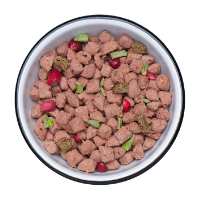 |
Varies |
A+
|
| Best Value |
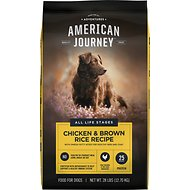 |
$1.12/lb |
A+
|
| Human Grade |
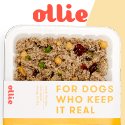 |
Varies |
A+
|
| Most Popular |
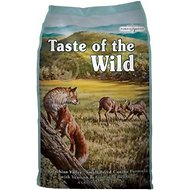 Taste of the Wild Appalachian Valley Small Breed Grain-Free Dry |
$1.69/lb |
A+
|
| #3 |
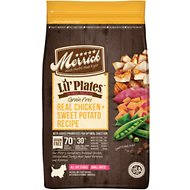 Merrick Lil’ Plates Grain Free Real Chicken & Sweet Potato Recipe |
$3.07/lb |
A+
|
| #4 |
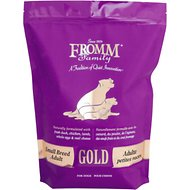 |
$3.27/lb |
A+
|
| #5 |
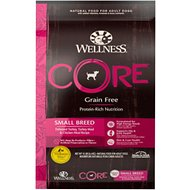 |
$3.00/lb |
A
|
| #6 |
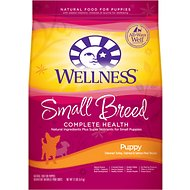 |
$2.77/lb |
A+
|
| #7 |
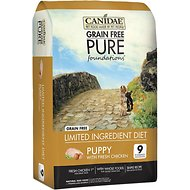 Canidae Grain Free PURE Foundations for Puppies with Chicken |
$2.35/lb |
A+
|
| #8 |
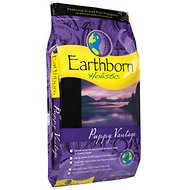 |
$1.23/lb |
A
|
Our Guide to Feeding an Adult and Puppy Pomeranian
Before picking the Best Possible Pomeranian Food take a look at our pomeranian feeding guide:
General Nutritional Recommendations
Individual dogs and breeds can have some special dietary requirements but most dogs have the same general nutritional needs as a species. They all needs the following basic nutrients:
- Water
- Protein
- Fat
- Carbohydrates
- Fiber
- Vitamins
- Minerals
The need for water is obvious. All animals need water to survive. Every important function in your dog’s body depends on water, such as carrying nutrients to cells, helping the body digest and absorb food, and flushing toxins from your dog’s body. Without enough water, your dog will quickly become sick, dehydrated, and die. People use all kinds of water for their dogs, depending on where they live and the condition of their water: tap water, clean well water, distilled water, purified water, and the list goes on. Hopefully you have clean tap water where you live but if you don’t, you should provide your dog with the same clean water that you drink yourself. Dogs need, on average, one ounce of water per pound of body weight per day. However, your dog may need more water, depending on the temperature outside and the amount of exercise he’s getting. Canned dog foods can be up to 82 percent moisture so if you are feeding your dog canned food, he may drink less water than expected since he’s getting so much moisture from the food. Keep fresh, clean water available for your dog at all times.
Your dog definitely needs good quality protein in his diet. Do you wonder if your dog is a carnivore or not? Many dog food companies today insist that dogs are carnivores who need “biologically appropriate” meat protein in their diets. Most veterinarians are taught that dogs are omnivores. There are actually arguments for both ways of thinking about dogs, based on their teeth (carnivore), intestinal length (omnivore), ability to digest starches (omnivore), and their ability to go for long periods between meals (carnivores). Your dog isn’t an obligate carnivore, like a cat, but he’s not quite the same kind of omnivore you are either. He does need meat protein in his diet. Feed your dog a meat-only diet and he won’t thrive. He needs more than protein. He needs a diet that is complete and balanced.
You can find lots of good information about what researchers consider complete and balanced for the canine diet on this site. Pet food manufacturers use these figures and percentages in formulating their recipes. The National Research Council (NRC) publishes nutrient profiles for dogs and cats for various life stages. The Association of American Feed Control Officials (AAFCO) publishes dog and cat nutrient profiles for adult maintenance and reproduction. Both AAFCO and NRC list minimum nutrient requirements and maximum nutrient requirements for nutrients with potential toxicity.
Your dog’s energy comes from the protein, fat, and carbohydrates he eats. Many dog owners can be obsessed with protein since it’s crucial to your dog’s health. It supports the immune system, builds lean muscle, repairs cells, and keeps your dog’s skin and coat healthy. It’s good for dogs from puppies to seniors. Most canine nutritionists today believe that dogs benefit from higher amounts of protein, especially animal protein.
The source of your dog’s protein does make a difference. Dogs can digest animal protein more easily than plant protein. This means that even though a dog food may say it has 30 percent protein, you should examine the ingredients to see how much of the protein comes from animal sources and how much comes from plant sources. The animal protein percentage of the food may be much lower than 30 percent.
Dog food ingredients must be listed on the label by weight, before cooking. For this reason you should place more importance on the first several ingredients listed. It’s advisable if the first two or three ingredients in a food for a healthy adult dog are meat proteins such as whole chicken or chicken meal. A whole meat, such as whole chicken, is mostly water. This means that the ingredient would be placed lower on the list if the water were removed. However, if it is followed by a named meat meal, such as chicken meal, the food should have a good percentage of animal protein. Meat meals like chicken meal have had most of their moisture already removed before they are added to the dog food so they are mostly protein.
Lots of foods today – even popular, expensive dog foods that claim to be high in protein – can have a lot of protein from peas and lentils. These ingredients do provide protein and some other nutrients that are beneficial for dogs, but they are not as easy for your dog to digest as animal sources of protein like meat and eggs.
Grain free dog foods have replaced many foods that contain grains such as corn and wheat today. Foods that contain corn and wheat (along with some of their derivatives such as corn gluten meal and ground yellow corn) are often seen as inferior foods today because of their association with filler ingredients. This is not true in all cases. There are still some good quality dog foods that contain small to moderate amounts of corn and other grains. There are also some newer foods being marketed today as “ancestral” grains which use spelt (a form of wheat), oats, barley, and some less common grains. In some cases your dog could be better off eating one of these low grain dog foods if it has good meat protein percentages and no peas/legumes or only small amounts of these plant proteins. These foods may have more bioavailability for your dog – meaning the nutrients are easier for him to obtain from the food – than some grain free dog foods.
In general, dog food manufacturers like to use plant material in dog foods, as opposed to animal proteins, because they are less expensive. Unfortunately, some dogs can have trouble digesting plant material such as peas, chickpeas, and lentils. These ingredients are also sources of fiber. If you are feeding a grain free dog food, it’s a good idea to check the fiber percentage to make sure it’s not too high. Most dog foods that contain grains have around 4 percent fiber per the guaranteed analysis. Grain free foods that use more plant protein can have up to 6-7 percent fiber per the guaranteed analysis. This can make a big difference to your dog’s digestive system – and to you when you are picking up after him. Some dogs are also beginning to have allergies and food sensitivities to peas and other plant proteins. This is common with any protein that becomes a frequent pet food ingredient.
The use of so much plant protein in dog foods today has also led to the increased use of digestive enzymes or “fermentation products” in foods. Digestive enzymes can help your dog digest food more easily but they are especially useful for digesting some plant proteins. So, while digestive enzymes are not bad ingredients in any way, they can be a sign that a dog food has some plant proteins that your dog may need help to digest.
AAFCO (the Association of American Feed Control Officials) recommends that adult dogs such as Pomeranians have at least 18 percent protein in their diet. Growing puppies need at least 22 percent protein in their diet. Most dog foods today will have protein percentages higher than these recommendations. There are some exceptions, such as limited ingredient diets (LID) or hypoallergenic foods. These foods sometimes need to use plant proteins or exotic meat proteins (in smaller amounts) so they don’t trigger an allergic reaction.
Most experts recommend that healthy adult dogs eat a diet that has higher protein, moderate fat, and low carbs. If your Pomeranian has a health problem of any kind, we recommend that you consult your veterinarian.
Good sources of animal protein for your Pom include poultry, meat, eggs, and fish. These proteins will provide your dog with all of the essential amino acids he needs for good health. Once again, plant proteins can provide some amino acids but in most cases they can’t provide a complete amino acid profile like that provided by animal proteins. Most of them are lacking in one or more of the essential amino acids required by dogs.
Your dog also needs fat as a healthy part of your dog’s diet. It’s the source of omega-3 and omega-6 fatty acids that are necessary for your dog’s skin and coat, heart function, brain development, and other body essentials. And essential fatty acids (EFA) help your dog absorb vitamins A, D, E, and K.
Just as with protein, fat from from animal sources is better for your dog than from plant sources. Your dog is not able to use fats from plant sources very easily, or at all. Good sources of fat in your dog’s diet include fish, such as salmon oil, and chicken fat.
Many dog food companies include flaxseed oil in their recipes and say that it’s a source of omega-3 fatty acid. This is only half true. It is a source of omega-3 fatty acid. Unfortunately, dogs aren’t really able to use this source. Plant sources of omega-3, such as flaxseed oil, contain alpha linolenic acid (ALA). This is an inactive precursor to EPA and DHA (omega-3 fatty acids). Dogs don’t have the enzymes necessary to break down ALA into EPA and DHA, even though EPA and DHA are the forms of omega-3 that your dog needs. They are the active forms of omega-3 that are easy for your dog to use. Fish oil is a good source of these forms of omega-3.
According to AAFCO, adult dogs need a minimum of 5 percent fat in their diets. Puppies need a minimum of 8 percent fat. Most dog foods today have higher fat percentages than this. Weight control dog foods may have this minimum percentage, but most other foods have moderate to high fat percentages. Fat in dog food does much to contribute to the taste or “palatability” of the food, from your dog’s perspective. Your dog may be less interested in whether a food is chicken, beef, or lamb, as long as the food has a nice fat percentage. Foods with lower fat percentages are often less appealing to dogs. This is one reason why canned dog foods are usually a favorite with dogs. Many of them are high in fat compared to kibbles. This is something to keep in mind with your Pomeranian.
A healthy adult dog that’s not engaged in serious exercise generally needs a dog food that has a fat percentage that is about half of the food’s protein percentage. For instance, if your Pomeranian’s kibble has a protein percentage of 26 percent, a fat percentage of about 13 percent would be suitable for most dogs. Toy dogs do burn more calories per pound than their larger doggy cousins so you may want to consider feeding a food that is formulated for Toy/small breeds. These foods can have a few more calories per ounce than “regular” dog foods to meet the special needs of small dogs. Toy dogs are not usually able to eat a lot of food at one time so the extra calories per ounce provide them with plenty of nutrients, even though they are not eating a lot of food per meal.
Dog foods that have fat percentages between 12 and 16 percent (dry matter basis) are usually considered to have moderate fat by today’s standards. Foods with protein percentages between about 24 and 32 percent (dry matter basis) are generally suitable for most healthy adult dogs today. There are lots of good quality foods that fall in this range.
Some dog owners are confused about carbohydrates. Carbs are not just grains like corn or wheat. They are not just fillers ingredients. They also include sweet potatoes and many of the vegetables that are used in grain free foods today. Fiber can come from some kinds of carbohydrates. Some prebiotics can come from carbohydrates. Carbs also provide energy for your Pomeranian. Carbs are only a problem when they come from poor quality ingredients or when there are too many of them in a food.
Even if you are feeding your Pomeranian a high quality dog food, he is probably getting plenty of carbs in his diet. If your dog food has chickpeas in it, they are almost 70 percent carbohydrates. Sweet potatoes are more than 90 percent carbs. Keep in mind that some carbohydrates are very beneficial for your Pomeranian. Chicory and beet pulp are good prebiotics, for example.
Many dog foods today have between 30 and 50 percent carbohydrates. We would suggest trying to avoid foods that have 40 percent or more carbohydrates but even this is not always easy. A few dog foods have very low carb percentages (15 to 20 percent) but you will probably find that even some of the best dog foods have more carbohydrates than you expect. You are most likely to find very low carbohydrates in some canned dog foods. Unlike kibble, which needs starch to form a batter and go through the pet food machinery, canned foods don’t need carbs. (Some canned foods do have gums and thickeners to give the food shape, but they don’t necessarily provide carbs the way grains or potatoes do in kibbles.) Dog food companies are not required to provide information about the carbs in their foods but some do provide this information on their web sites. You can also check dog food reviews such as those on Pawster to find information about carbohydrates; or try to figure carbs for yourself.
Like other dogs, Poms need vitamins and minerals in their diet. Many people think that vitamins and minerals in dog foods come from the food ingredients. Actually, most dog foods are cooked at such high temperatures that some of the nutrients are lost during the manufacturing process. To make up for this loss, companies add extra vitamins and minerals to their formulas. That’s why you almost always see the long list of vitamins and minerals on the label. Many companies buy pre-packaged vitamins and minerals from counrtries outside the U.S. such as Canada, France, and China. Lots of people have concerns about the source of these ingredients though it should be noted that companies don’t always have many options about where they can obtain certain minerals. If you have concerns about vitamins and minerals sourced from China, check the company’s FAQ section. Some companies will address this issue. Or you can contact the company directly and let them know about your concerns.
Some dog foods use chelated minerals (also called proteinated minerals). Chelated minerals are chemically bonded to proteins so they are easier for your dog to absorb. Depending on the type of dog food, they can be better for your dog. For example, foods that have lots of grains or lots of plant material, in general, which can be hard to digest, interfering with the digestion of minerals in an animal’s body. Chelated minerals are often used in these foods to make sure the dog gets all of the minerals he requires. Other dog foods that may have fewer grains or plant material, may be fine with ordinary added minerals.
Dog owners should avoid foods that have artificial flavors, colors, and sweeteners. We consider “natural flavor” to be an artificial flavor because of the vagueness of the term. “Caramel” is a coloring and/or sweetener. Artificial sweeteners include: ethoxyquin, butylated hydroxyanisole (BHA), butylated hydroxytoluene (BHT), tertbutyl hydroquinone (TBHQ), and propyl gallate. Vitamin E, Vitamin C, and certain plant extracts such as rosemary oil are often used as natural preservatives. Natural preservatives will not keep a food fresh as long as artificial preservatives but they are considered to be healthier for your dog.
Special Dietary and Nutritional Considerations
Like many small breeds, Pomeranians often live long lives. It’s not unusual for a Pom to live well into his teen years. They do have a couple of health issues that are food-related.
Toy and small breed dogs such as Pomeranians (dogs under 20 pounds) usually need about 40 calories per pound/per day. This is more calories per pound than larger dogs because small dogs have a faster metabolism. However, this is only a generalization. You do need to consider other factors when determining how much to feed your Pom – factors such as your dog’s age, activity, whether he’s neutered, his general health, and so on. If your little dog is spayed/neutered, he may need fewer calories since the lack of sexual hormones will slow the metabolism. If your dog is very active, he may need a few more calories. You should always pay attention to your dog’s condition. Notice if he’s gaining or losing weight and adjust his meals as necessary. You can see some of the charts and tables used to make calorie calculations here.
If your adult Pomeranian weighs 7 pounds, he may need approximately 300 calories per day. If your Pom is neutered or very inactive, he may need a few less calories – perhaps around 267 calories per day. Again, these calories suggestions are starting points. You can adjust them according to your dog’s individual needs.
You can feed your Pomeranian a good quality adult dog food made for all breeds. This could be an all life stage food which would be suitable for dogs of any age. Or you could feed your adult Pomeranian a good quality food made for adult maintenance. Some owners prefer to feed their Poms a food that is specially formulated for a small breed. These foods have more calories per ounce than other foods. They usually kibble pieces that are small than other dog foods so they are easy for Toy dogs to eat. And they can have more nutrients per ounce than foods for larger dogs. This is because small dogs can’t usually eat very much at each meal and it’s important for them to get plenty of nutrition when they eat.
You have similar choices when it comes to puppy foods. You can choose regular puppy foods, all life stage puppy foods, or puppy foods formulated especially for Toy/small breed puppies. While small breeds don’t usually have the same problems with bones and joints that large breed puppies can have, it’s important not to overfeed them while they are growing. Growing too fast while young can lead to bone and joint problems later in life. Pomeranians can be prone to luxating patellas so it’s important to keep them slim as puppies and as adults. Allowing them to become overweight or obese can worsen any tendency toward this condition.
Pomeranian puppies can also have some problems with hypoglycemia (low blood sugar). This is not uncommon in many Toy/small breed puppies. If a puppy goes too long without eating he can become weak or faint. It’s a good idea to keep Karo syrup (corn syrup) or Nutrical in your kitchen cabinet so you can place some on a puppy’s tongue in an emergency. Most breeders recommend giving a Pom puppy an extra small meal or two each day that bigger puppies don’t need. You can do this for the first few months until your puppy is old enough to regulate his blood sugar levels. By the time he’s about six months to a year old, he should be able to start eating two or three meals per day like an adult Pom.
If you have questions about your puppy’s weight and condition, check with your puppy’s breeder or your veterinarian.
There are lots of good dog and puppy foods today, including foods for Toy/small breeds. These are only a few suggestions. The most important thing is to find a food that works for your dog. We hope you will take the information offered here and use it to choose a good food for your dog. If you need any help, start with one of the foods recommended or check out some of the foods reviewed in our pages here on Pawster.

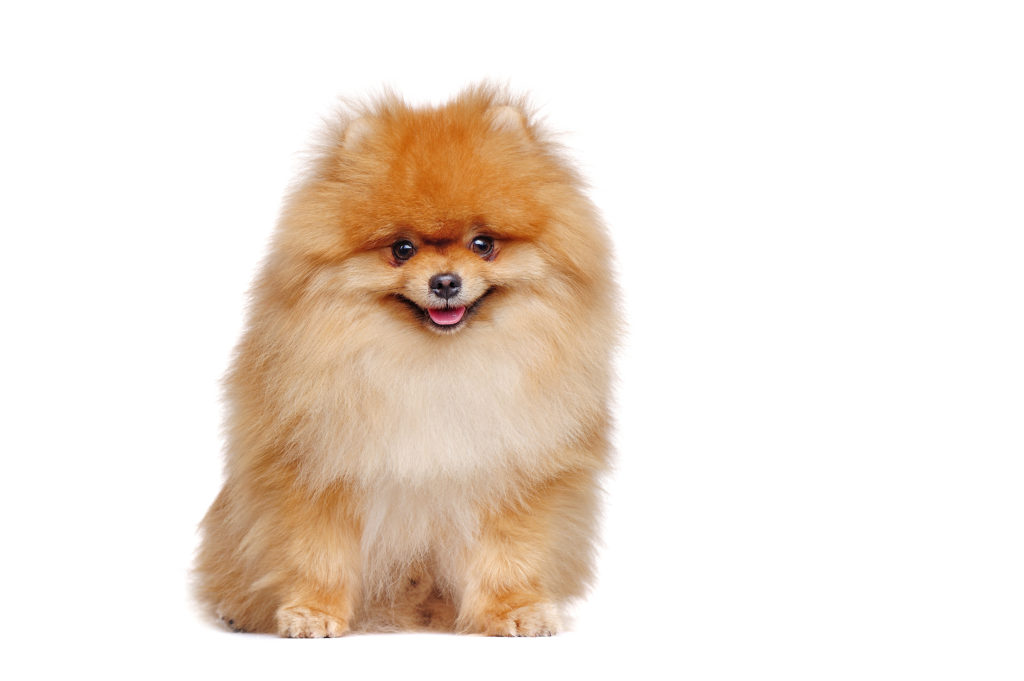
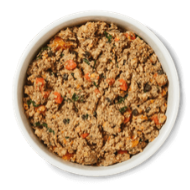


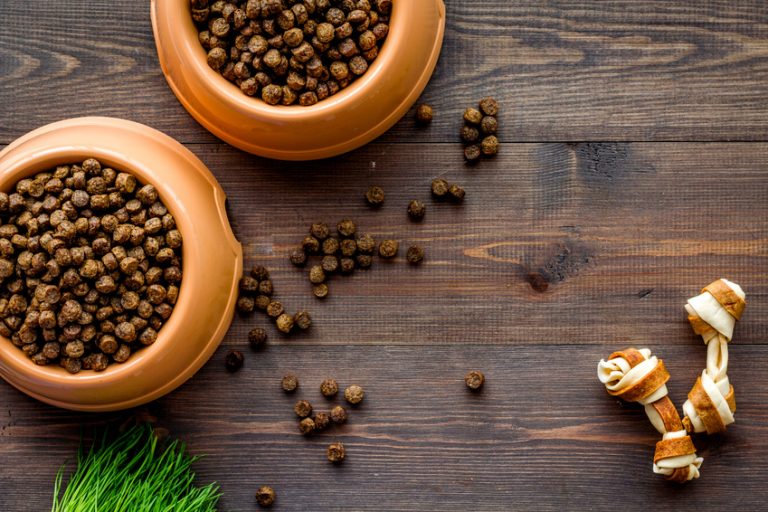
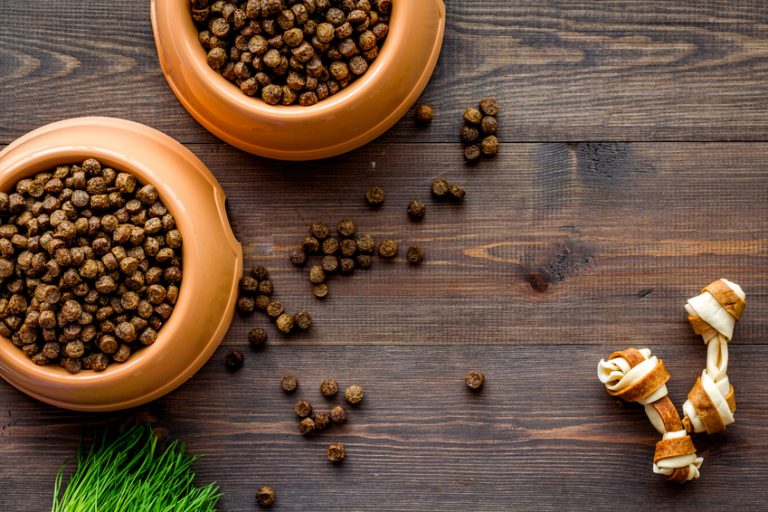
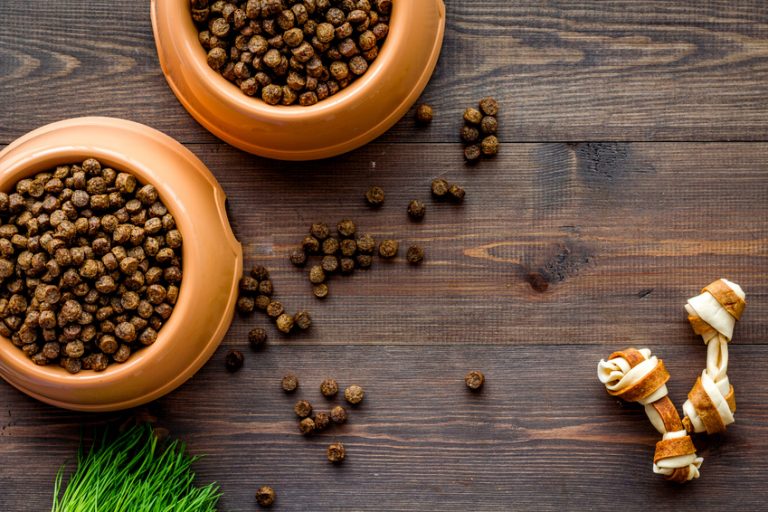
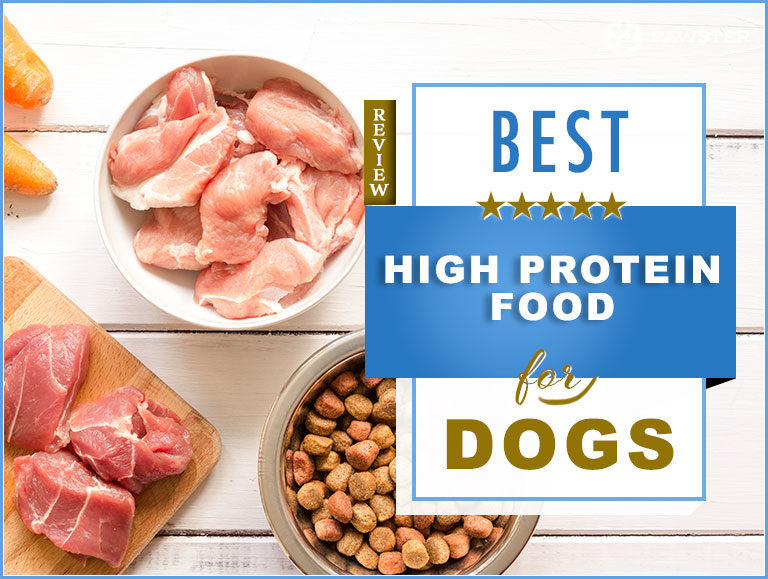

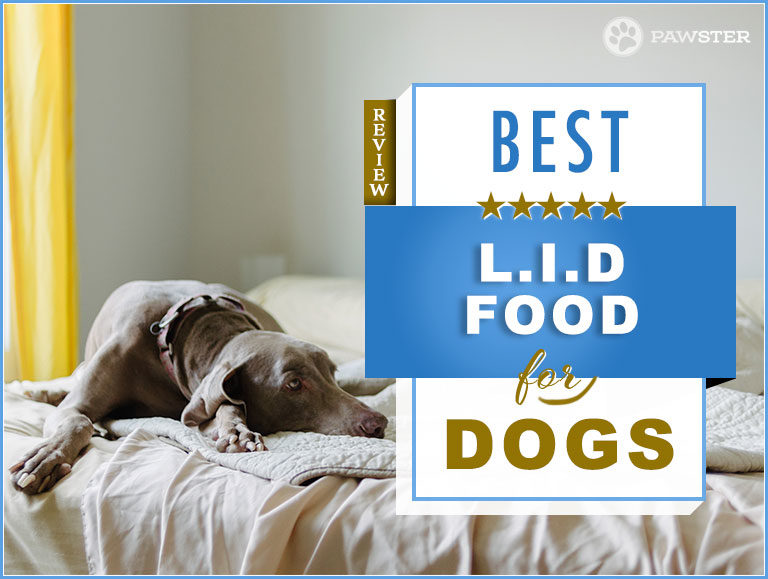
What brand of dry dog food should I feed to an adult chihuahua-pomeranian cross?
Are you able to give your pom natural safe vegetables and fruit that are safe for canine in very tiny amounts as added to their diet